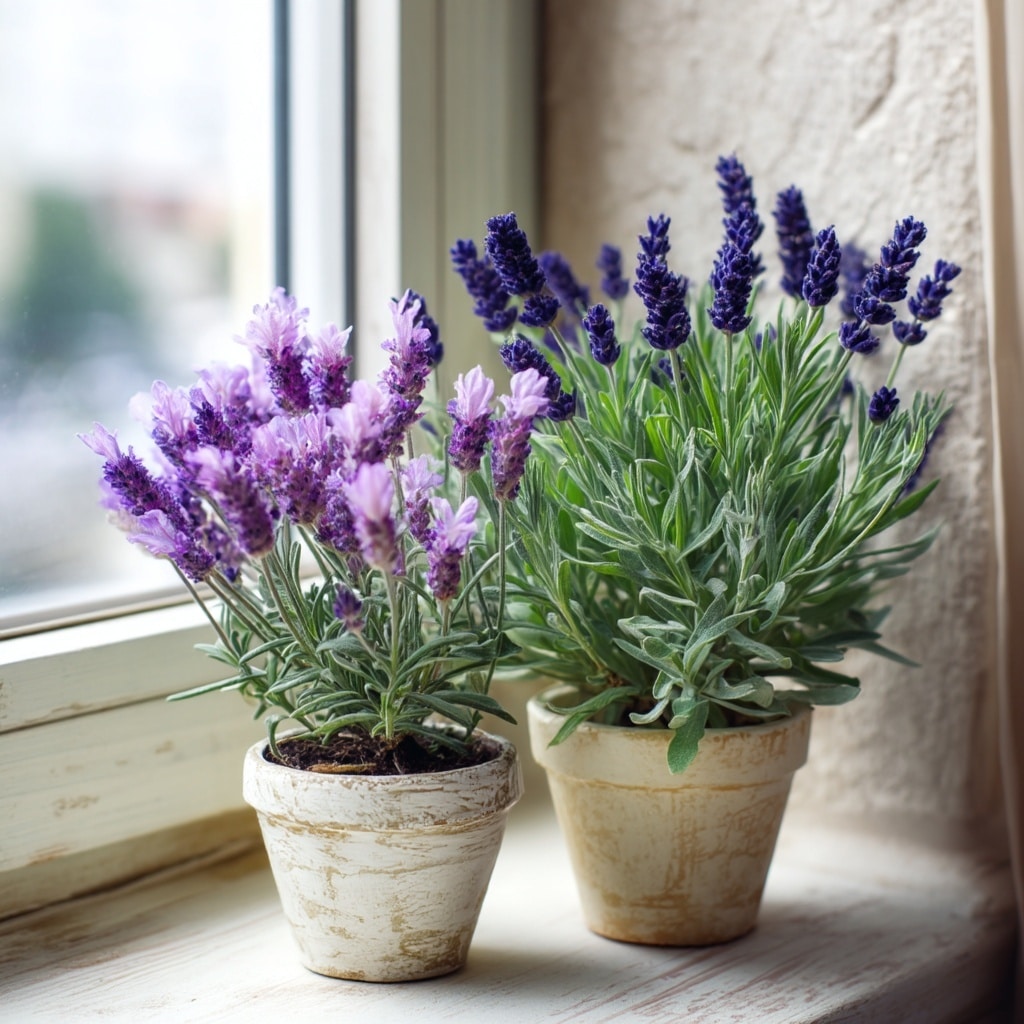Love lavender but don’t have outdoor space? No problem! With the right steps, you can enjoy this fragrant, calming herb inside your home no matter the season. In this guide, you’ll learn how to grow lavender indoors year round — even if you’re a beginner. Let’s explore nine smart tactics to help your lavender thrive inside!
Table of Contents
1. Choose the Right Lavender Variety
Not all lavender is indoor-friendly. For best results, go with English Lavender (Lavandula angustifolia) or French Lavender (Lavandula dentata). These varieties are compact, adaptable, and better suited for container life. English lavender has a sweeter scent, while French types bloom more often—both are great for indoor environments.
2. Pick a Pot with Excellent Drainage
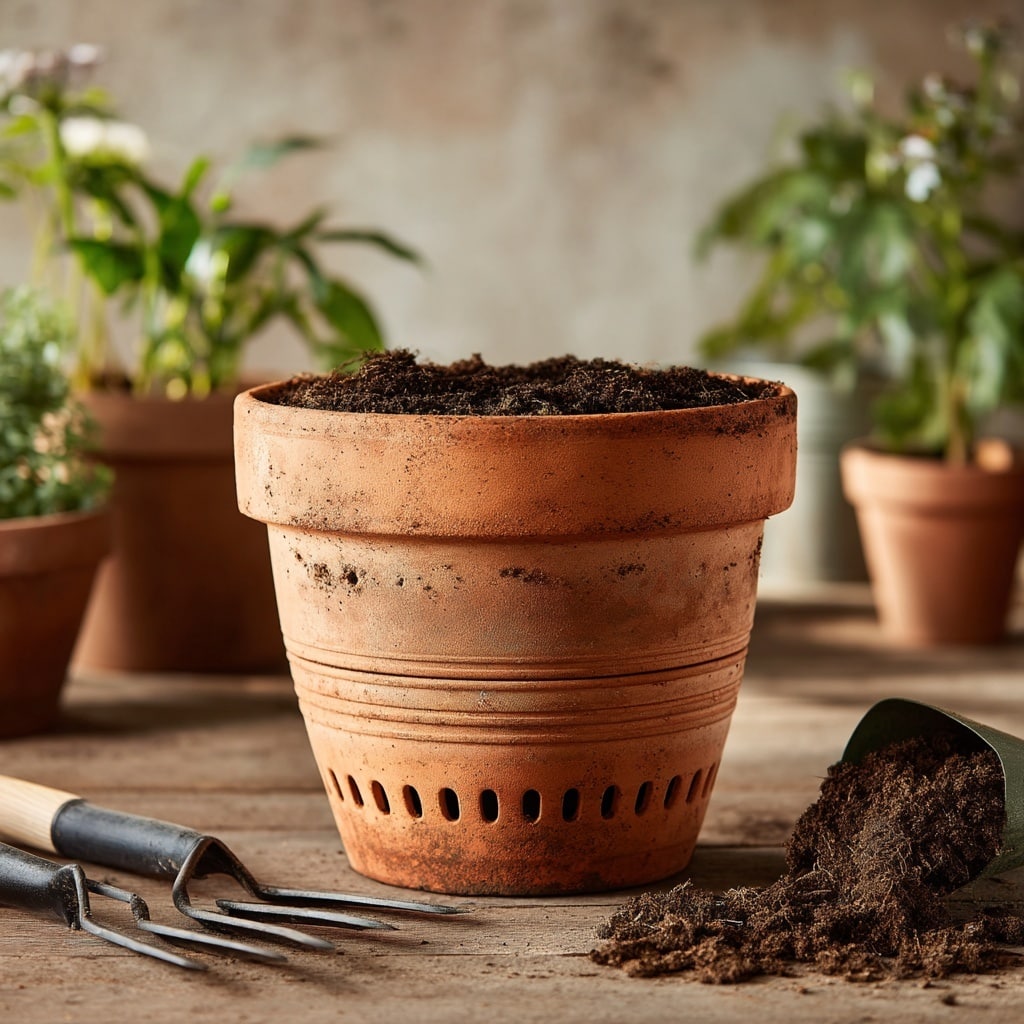
Lavender hates soggy roots. Choose a terracotta pot with drainage holes, around 10–12 inches in diameter. Terracotta helps wick away moisture and prevents root rot. Pair it with a matching saucer, but always empty any standing water after watering.
3. Find a Sun-Drenched Spot
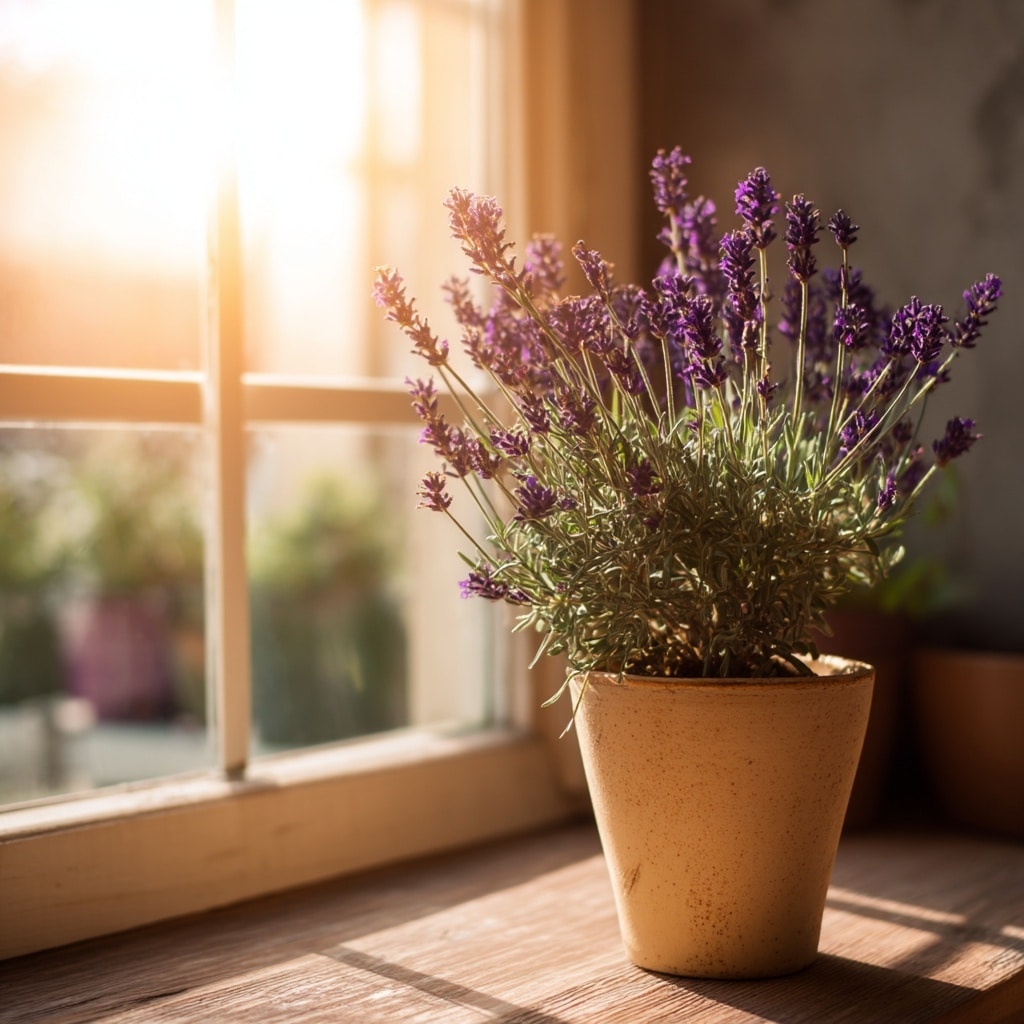
Lavender loves light—6 to 8 hours of direct sun per day is ideal. Place your pot near a south-facing window, or supplement with a grow light if your space is dim. Insufficient light leads to leggy, weak growth, so the more sun, the better!
4. Water Sparingly and Smartly
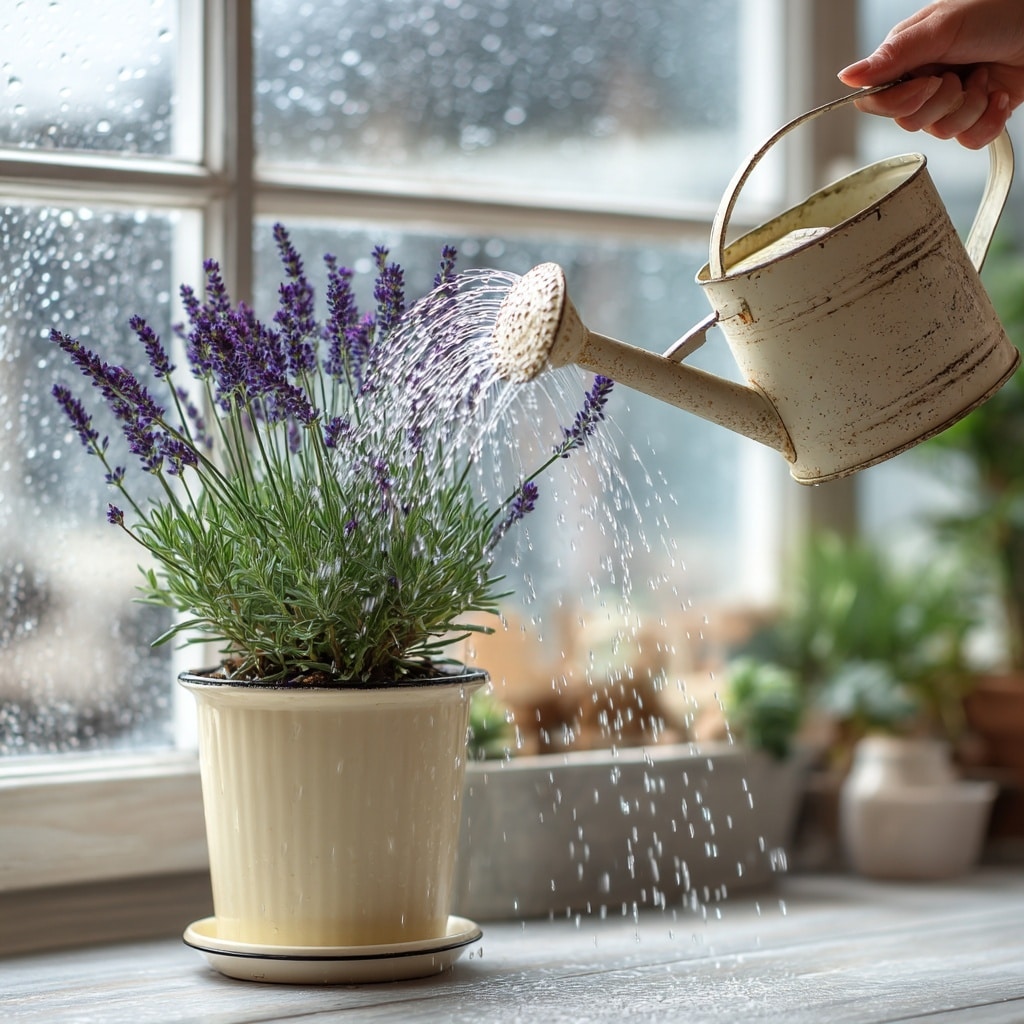
Overwatering is a common mistake. Stick your finger into the soil — if the top inch is dry, it’s time to water. When you do, water deeply until it drains from the bottom. Avoid misting or surface sprinkling. Lavender prefers dry feet!
5. Use Well-Draining Soil
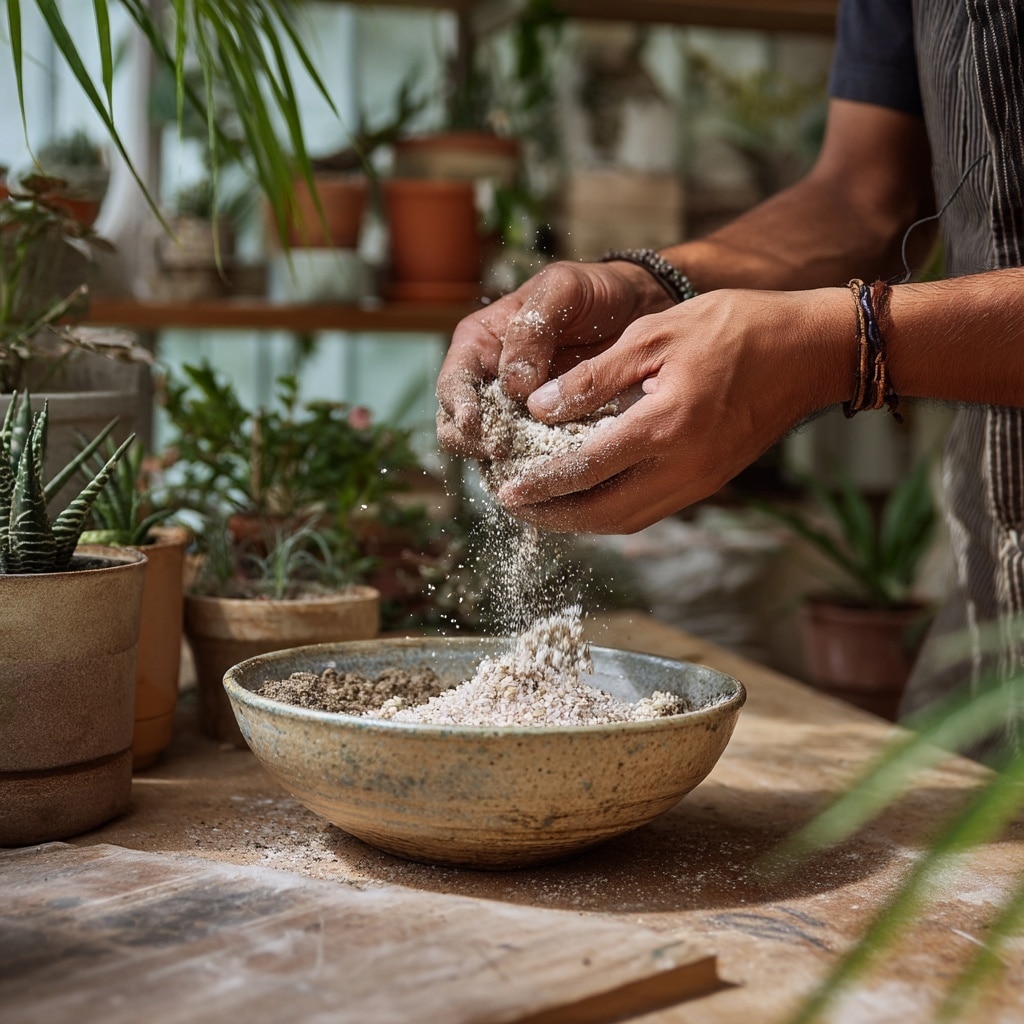
The right soil keeps roots healthy. Choose a cactus or succulent mix, or make your own with 2 parts potting soil, 1 part sand or perlite. This encourages proper air flow and drainage, mimicking lavender’s native Mediterranean environment.
6. Maintain Optimal Indoor Temperatures
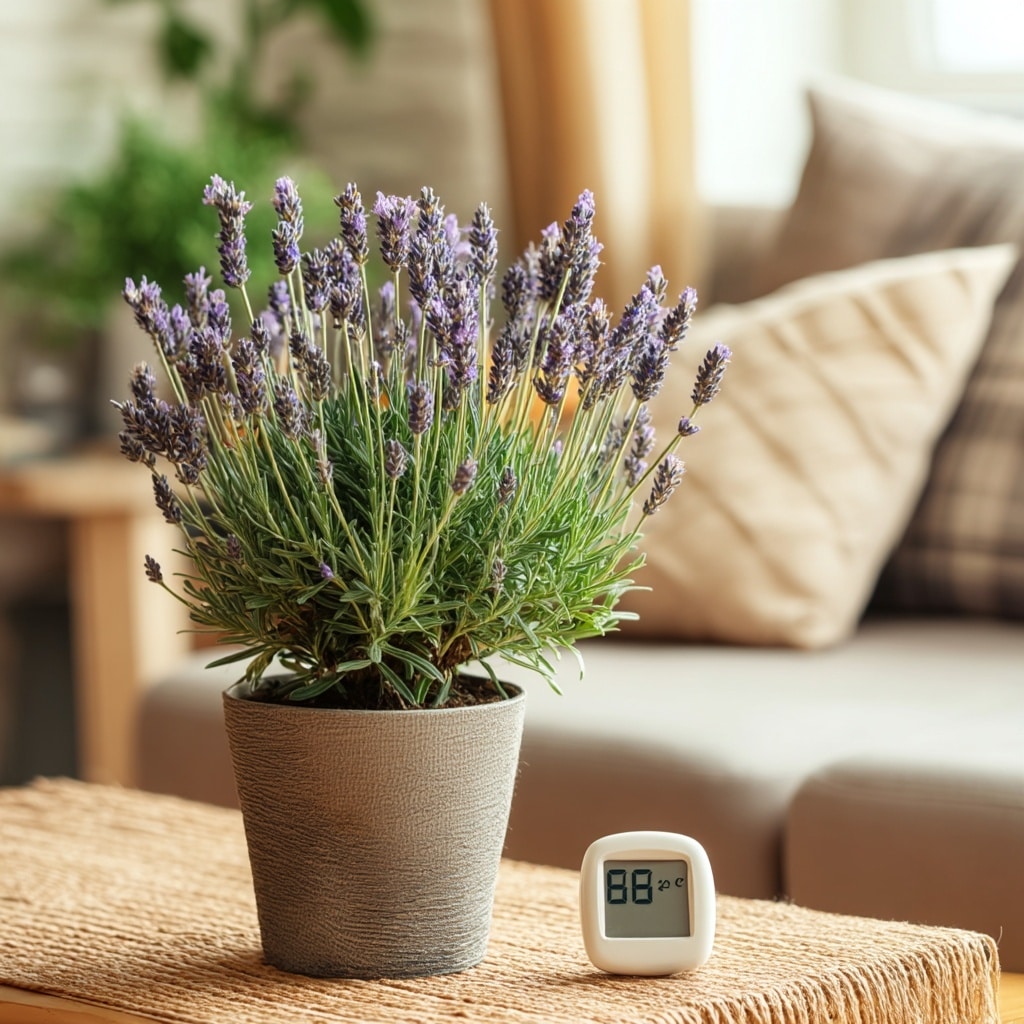
Lavender likes warmth but dislikes extreme swings. Keep indoor temps between 60°F and 70°F (15–21°C) during the day, and not below 50°F (10°C) at night. Avoid placing your pot near vents or drafty windows.
7. Prune Regularly to Promote Bushy Growth
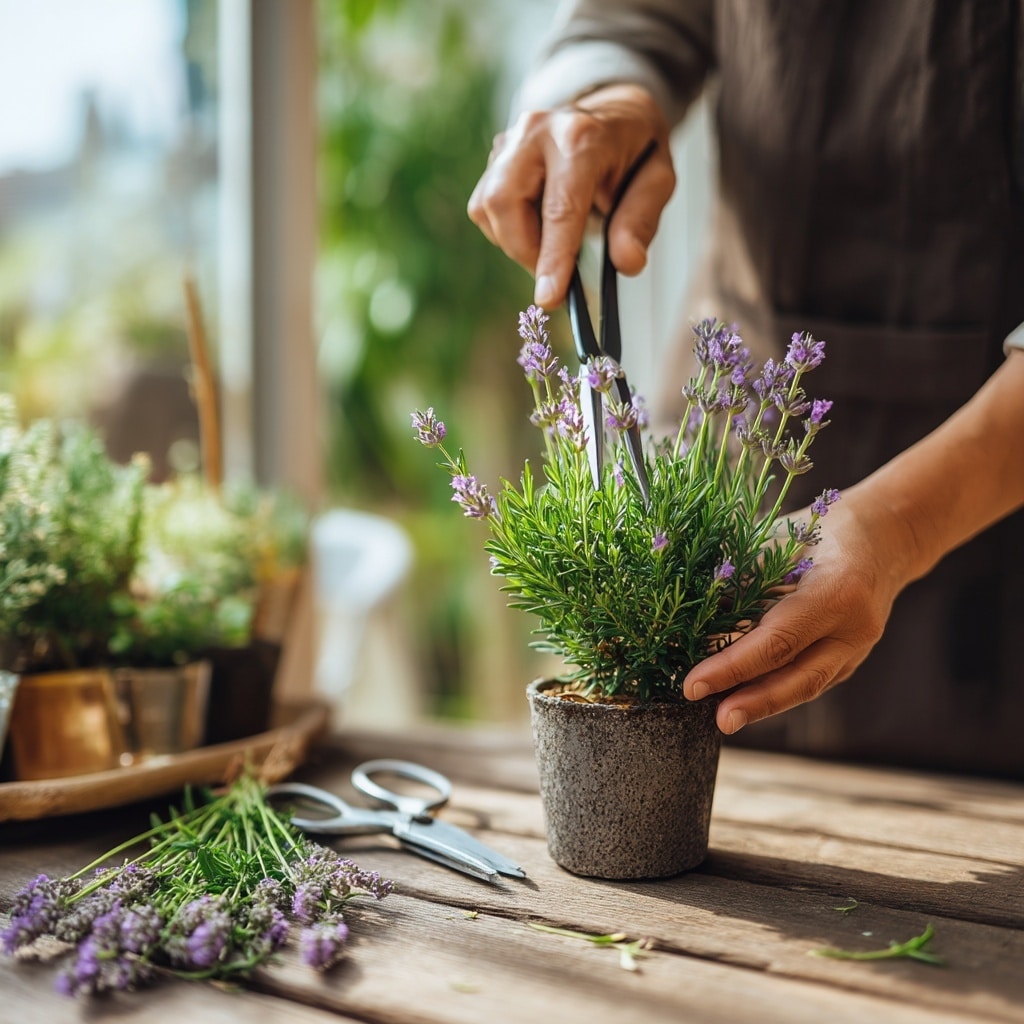
Pruning isn’t just about appearance—it encourages more flowers. In early spring, trim back about one-third of the plant. Remove faded blooms throughout the year to keep the plant tidy and productive.
8. Fertilize Occasionally (But Don’t Overdo It)
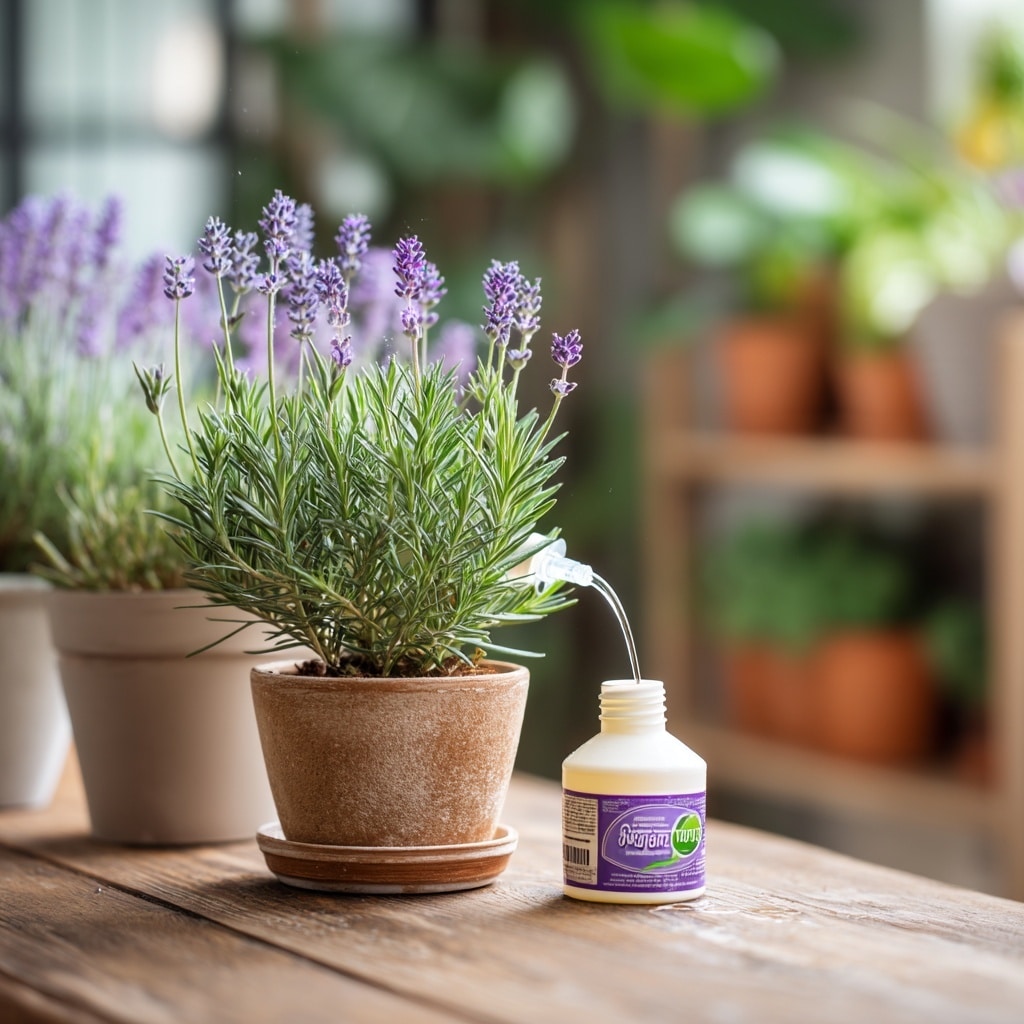
Lavender doesn’t need heavy feeding. Apply a diluted, balanced liquid fertilizer (like 10-10-10) every 6–8 weeks during spring and summer. Skip fertilizing in winter when growth naturally slows down.
9. Watch for Indoor Pests
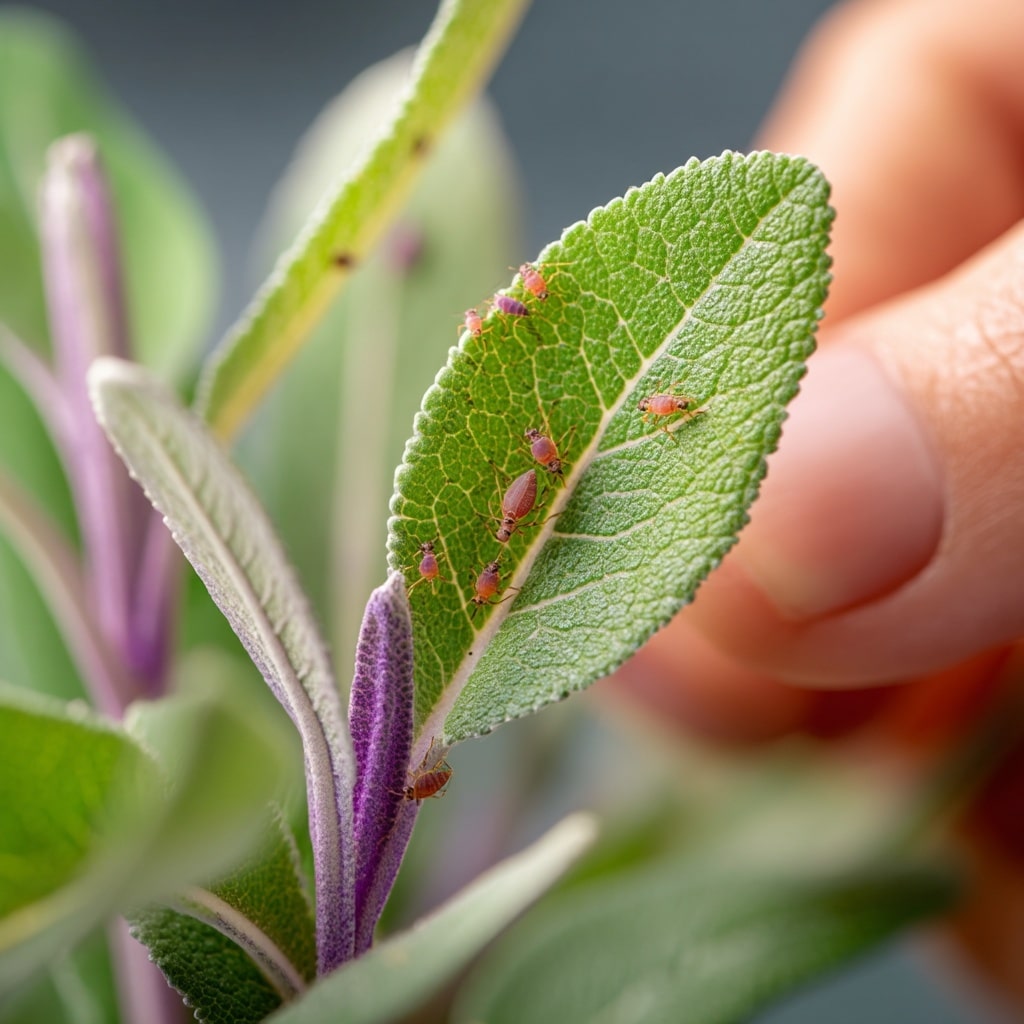
Lavender is fairly pest-resistant, but indoors, you might see spider mites or aphids. If that happens, rinse the plant or use an organic insecticidal soap. Good airflow and dry soil help keep pests at bay.
Conclusion
Growing lavender indoors year-round is not only possible—it’s easy and rewarding with the right tactics. By giving your plant sunlight, proper drainage, and a little love, you’ll enjoy the soothing scent and beauty of lavender every season. Happy indoor gardening!

